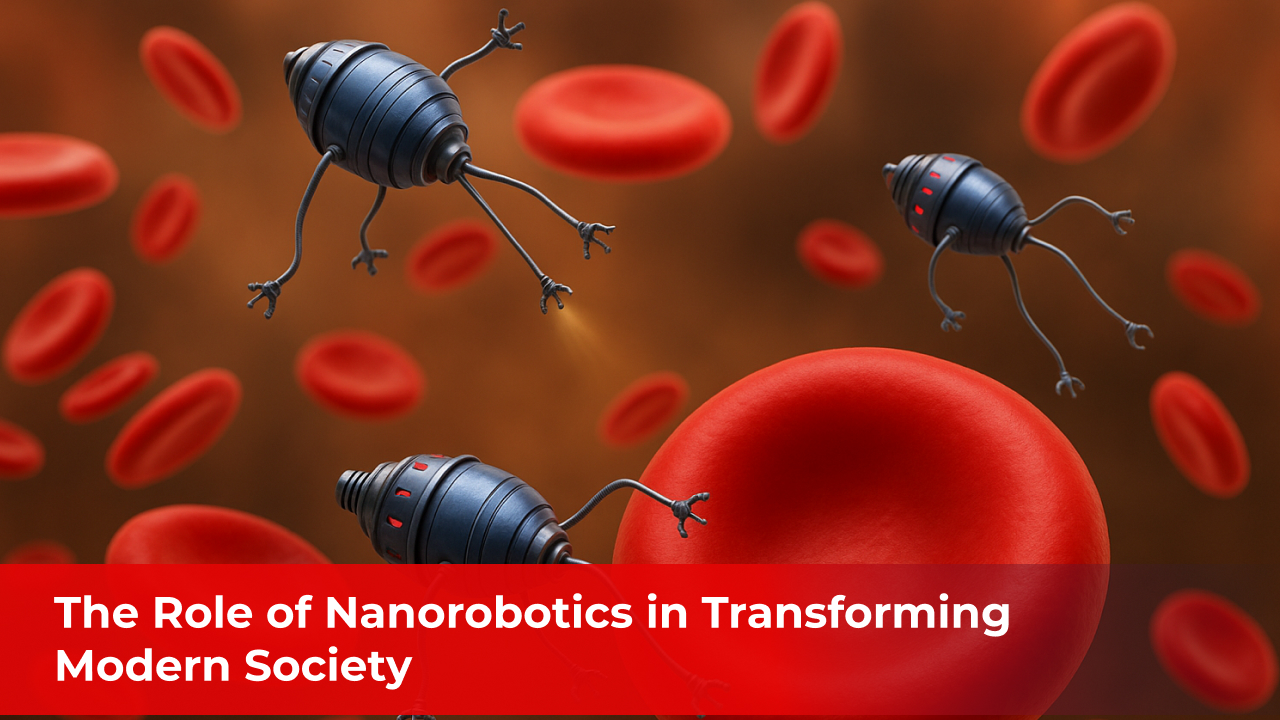Nanorobotics has become prevalent in today's society on a large scale. It is widely used in various fields, including mimicking biological cells, cancer treatment, environmental cleanup, etc. These are just some of the basic implementations of this revolutionary field. With some research and experimentation, no field of study is left without implementing nanorobotics. Thus, it is necessary to become fully aware of the field and its full scope, which will likely be the future of this fantastic world. You can delve into the world of nanorobotics through the following article. With the article below, you can also make yourself aware of the application and threat of nanorobotics in the real world.

What is nanorobotics?
In the science and technology field, nanorobotics is becoming an important subject. It deals with designing, developing, and creating robots at the nanoscale, i.e., between 1 and 100 nm. Nanorobotics can transform society and revolutionise all industries, whether in the medical or manufacturing sectors. Since these robots are so small, they can perform tasks that are even beyond the capacity of conventional robots, which are of a macro-scale in size. In short, these nanoscale robots hold unique and special features and properties that make them highly valuable in applications for various industries.
How does nanorobotics work?
Widely known as nanorobots, the robots in nanorobotics work at the nanoscale. They are designed differently based on their intended application. However, technologies such as nanoscale sensors, nanoscale actuators, and control systems are typically used in every piece to make it work. At first, the nanorobot sensors detect specific conditions or signals that indicate the presence of a particular type of material and transmit the information to the control system. Afterwards, the control system makes the nanorobotics work according to the provided data. However, to finalise the implementation of nanorobots to perform their specific task, it's crucial that the nanorobots can navigate and interact with their environment properly. Here, using various methods, the final stage of nanorobots is achieved, including remote control, self-propulsion, or biological or chemical means.
What are the challenges in society's implementation of nanorobotics?
Though the implementation of nanorobotics is an essential and revolutionary development for society, many challenges have been faced during its implementation, which can be seen as follows:
- Complexity in technical implementation- Nanorobotics is a highly skilled field of study involving complicated technologies. During the implementation of nanorobots, the process consists of overcoming technical difficulties, including making the nanoscale components, handling the nanorobot's movement, and ensuring that the nanorobot has complete stability during its working stage.
- Scrutiny issues over security—Nanorobotics have been used in various fields, including the medical and environmental sectors. However, they simultaneously increase the concern for the safety of their users. For instance, during the implementation of nanorobotics in medical treatment, the technology can even harm the patient if it malfunctions.
- Concerns over regulation—Many countries have been implementing rules on using nanorobotics in various domains. This may even lead to the formation of some regulations that may limit the field's application. This can further assist in slowing down the adoption of the technology on a large scale.
- Lack of funding and resources—Research and experimentation in nanorobotics are expensive and thus require a lot of funding and resources. Moreover, this field of study also needs specialised human force and equipment, which is difficult to find.
- Problem in production on a large scale—The development and production process of nanorobotics is vast and challenging. It requires a time-consuming manufacturing process, which makes it difficult to produce them on a large scale.
Does society have any threat from nanorobotics?
Though nanorobots can create issues for living organisms or the environment if there is any problem with their design and control, this situation only applies when nanorobots cannot target their enemy well. On the other hand, if the technology is manufactured with precautions and without any error, it is only a boon for society, which helps to grow it at a breakneck pace.
What are the different applications of nanorobotics?
These tiny robotic systems, operating at the nanoscale, have the potential to revolutionise industries such as medicine, environmental science, and materials engineering. Some of the theoretical and practical concepts that hold significant promise for various fields include:
- In medicine, nanorobots could be used for targeted drug delivery, allowing for precise treatment of diseases at the cellular level, thus minimising side effects and enhancing therapeutic efficacy.
- In environmental science, nanorobots could help detect pollution and remediate contaminated environments by breaking down harmful substances at the molecular level.
- In materials engineering, nanorobotics could facilitate the development of advanced materials with unique properties, leading to innovations in electronics, energy storage, and beyond.
- Nanobots can enhance the quality and efficiency of manufacturing processes. These technologies help increase the precision and accuracy of work, which is otherwise difficult to obtain through the traditional manufacturing process.
- Nanorobots can serve as investigative instruments that aid researchers in exploring the nanoscale domain, ultimately resulting in innovative technological advancements.
- Nanorobots can modify and construct materials at the nanoscale, potentially resulting in novel and enhanced materials with distinct characteristics.
- Nanorobots can also be used to produce, repair, and maintain satellites and other space vehicles.
Conclusion: Scope of nanorobotics in the real world
Nanorobotics represents a dynamic and expansive field that holds remarkable promise for both current and future applications. This innovative technology is at the forefront of scientific exploration, with its theoretical frameworks continuously advancing to unveil new possibilities. Imagine a future where tiny, intelligent machines, known as nanorobots, are not only capable of tackling intricate challenges but are also essential in revolutionising multiple sectors. From healthcare, where they might deliver targeted drug therapies at the cellular level, to environmental science, where they could assist in pollution cleanup, the potential of nanorobotics to address pressing issues and enhance quality of life is both exciting and profound. As research progresses, the vision of a world enhanced by these microscopic marvels draws ever closer.
